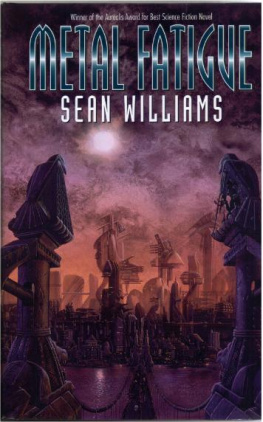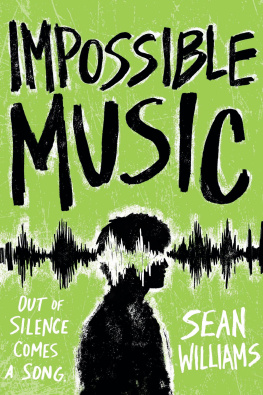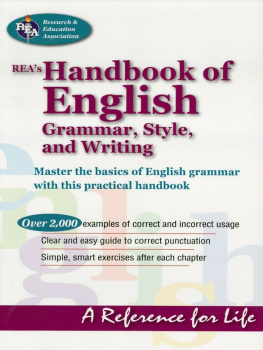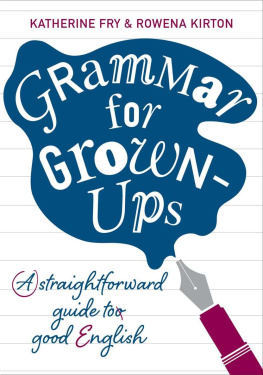


Copyright 2019 by Zephyros Press, Emeryville, California
No part of this publication may be reproduced, stored in a retrieval system, or transmitted in any form or by any means, electronic, mechanical, photocopying, recording, scanning, or otherwise, except as permitted under Sections 107 or 108 of the 1976 United States Copyright Act, without the prior written permission of the Publisher. Requests to the Publisher for permission should be addressed to the Permissions Department, Zephyros Press, 6005 Shellmound Street, Suite 175, Emeryville, CA 94608.
Limit of Liability/Disclaimer of Warranty: The Publisher and the author make no representations or warranties with respect to the accuracy or completeness of the contents of this work and specifically disclaim all warranties, including without limitation warranties of fitness for a particular purpose. No warranty may be created or extended by sales or promotional materials. The advice and strategies contained herein may not be suitable for every situation. This work is sold with the understanding that the Publisher is not engaged in rendering medical, legal, or other professional advice or services. If professional assistance is required, the services of a competent professional person should be sought. Neither the Publisher nor the author shall be liable for damages arising herefrom. The fact that an individual, organization, or website is referred to in this work as a citation and/or potential source of further information does not mean that the author or the Publisher endorses the information the individual, organization, or website may provide or recommendations they/it may make. Further, readers should be aware that websites listed in this work may have changed or disappeared between when this work was written and when it is read.
For general information on our other products and services or to obtain technical support, please contact our Customer Care Department within the United States at (866) 744-2665, or outside the United States at (510) 253-0500.
Zephyros Press publishes its books in a variety of electronic and print formats. Some content that appears in print may not be available in electronic books, and vice versa.
TRADEMARKS: Zephyros Press and the Zephyros Press logo are trademarks or registered trademarks of Callisto Media Inc. and/or its affiliates, in the United States and other countries, and may not be used without written permission. All other trademarks are the property of their respective owners. Zephyros Press is not associated with any product or vendor mentioned in this book.
Interior and Designer: Will Mack
Art Producer: Karen Beard
Editor: Justin Hartung
Production Editor: Andrew Yackira
Illustrations: Will Mack
Morgan Black
ISBN: Print 978-1-64152-373-8 | eBook 978-1-64152-374-5
This book is dedicated to those who love the English language, who appreciate its dynamic flexibility, and who understand that its rules are not always set in stone.
HOW TO USE THIS WORKBOOK ON AN EBOOK DEVICE
If youre reading this workbook on a touch-screen device, you can add notes and highlight text just like you would in a physical workbook.
Some sections will prompt you to write in answers or personal responses. Its easygive it a try right here: ___________.
With your finger, tap and hold for a few moments on the line above. Depending on the device youre using, an icon such as a magnifying glass will appear. Lift your finger and youll see an options menu. Select Note (or Notes) to add and save your own text. When youre done, an icon or highlighted area will remain, which you can always return to and tap if you want to reopen and read or edit your note.
The same tap-and-hold options menu offers Highlight or Color, which you can select if you want to highlight a passage or check a box. Experiment with it: By swiping your finger before releasing you can select entire sentences or paragraphs. The options menu also offers Bookmark for when you want quick access back to certain pages.
This method is the same on nearly all touch-screen ebook devices, but some have slight variations. If youd like more information specific to the device youre holding in your hands, a quick online search will yield best results.
Contents
I once made a mistake in another language that made the national news. I had been living in West Java (a province of Indonesia) to study music, and I went to a music party at the provincial governors house. Most people were sitting on the floor, as was the norm. I was leaning against a wall near the musicians so I could study what they were doing; I was also trying to be as inconspicuous as a redheaded white girl could be in Southeast Asia. The governor invited me to sit in a chair, as a foreign guest, but I politely declined, telling him in my allegedly fluent Indonesian that I would rather lean against the wall... or so I thought. In fact, I told him and everyone around me that I would prefer to cry out! The two words that I used were separated by a single letter: bersandar vs. bersangar . I can still hear not only their raucous laughter ringing in my ears, but also my mistake repeated over and over. If only there hadnt been a reporter in the room!
English has so many words that are separated by a single letter. If you have ever struggled with effect and affect , further and farther , or than and then , I can assure you that you are in great company. This book is your secret decoder ring: a quick and easy reference tool that will help you remember everything from whether to double the consonant in the past tense of cancel (spoiler: dont) to knowing the difference between who and whom .
I wrote this book because I am not just a college professor; I am also a friend, colleague, mom, and person who wants all English speakers to be able to speak and write with clarity and confidence. Inside this book, youll find 100 of the most common mistakes in grammar, punctuation, vocabulary, and style. My goal is for you to be (metaphorically, at least) running toward clarity, rather than running from murkiness. Leave your tragic mistakes behind and, with apologies to William Shakespeare, let slip the dogs of grammar!
Most of us learned proper grammar when we were young. But, over the years, mistakes turn into bad habits, which turn into fodder for mockery from the grammar sticklers in our lives. These errors are among the most common youll find.
Its important to remember: When a sentence is incomplete. Um, what? When a sentence is incomplete, no one knows what youre talking about. A half-finished sentence makes for a half-baked thought.
INCORRECT
Whether the stolen shirt was in her purse.
As if they hadnt flirted already!













